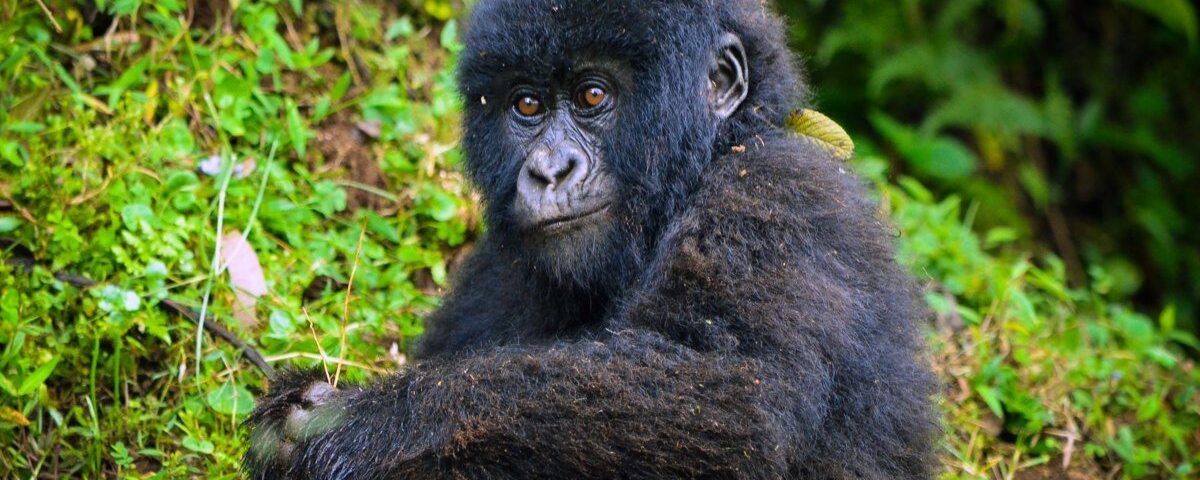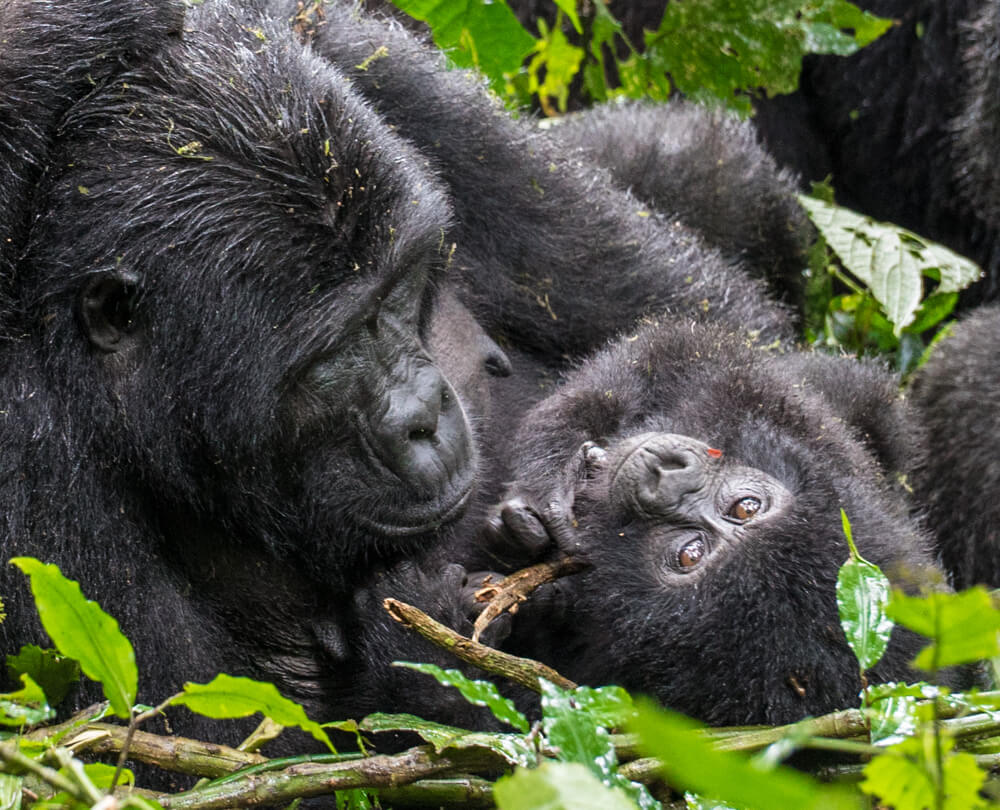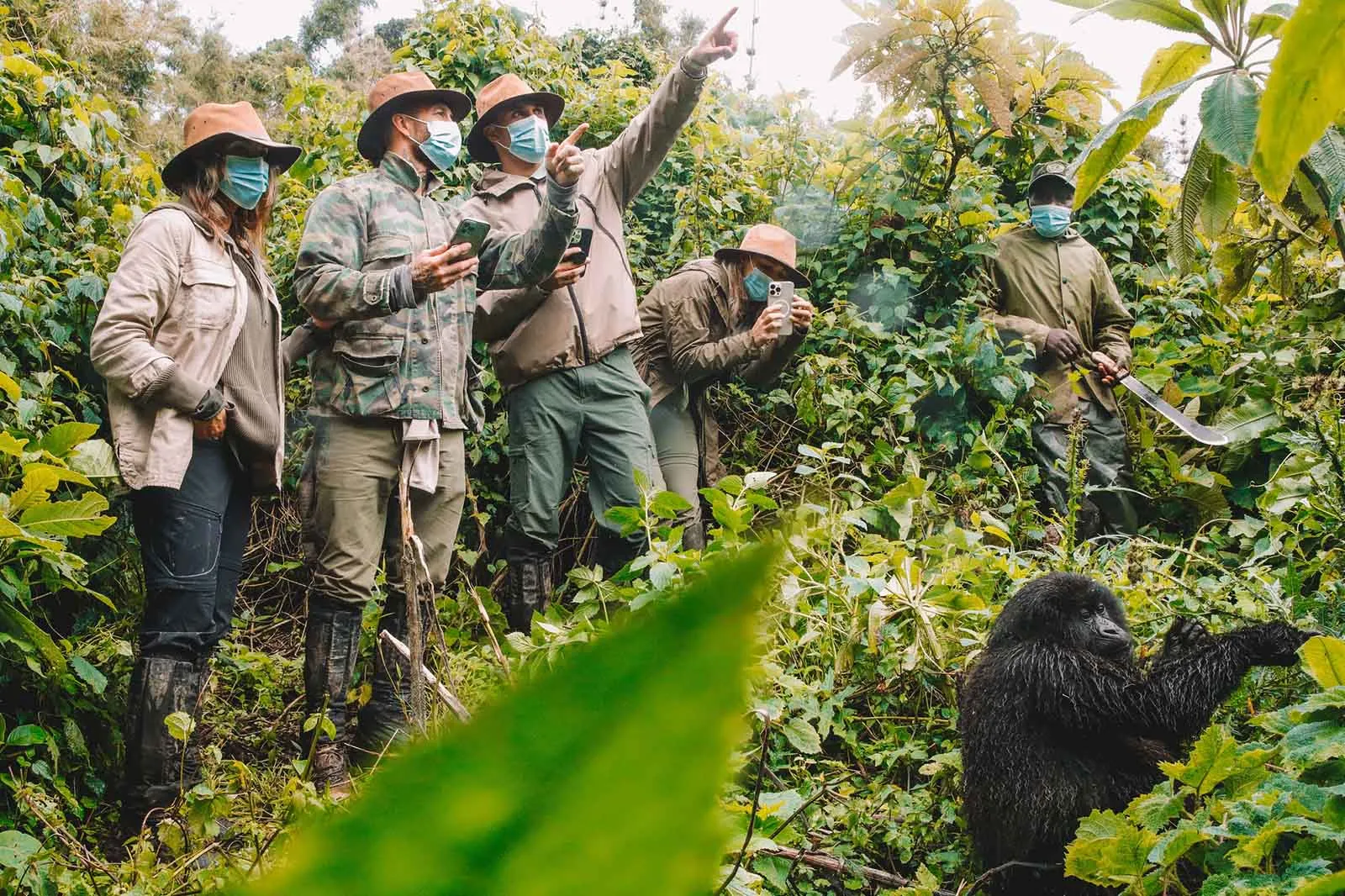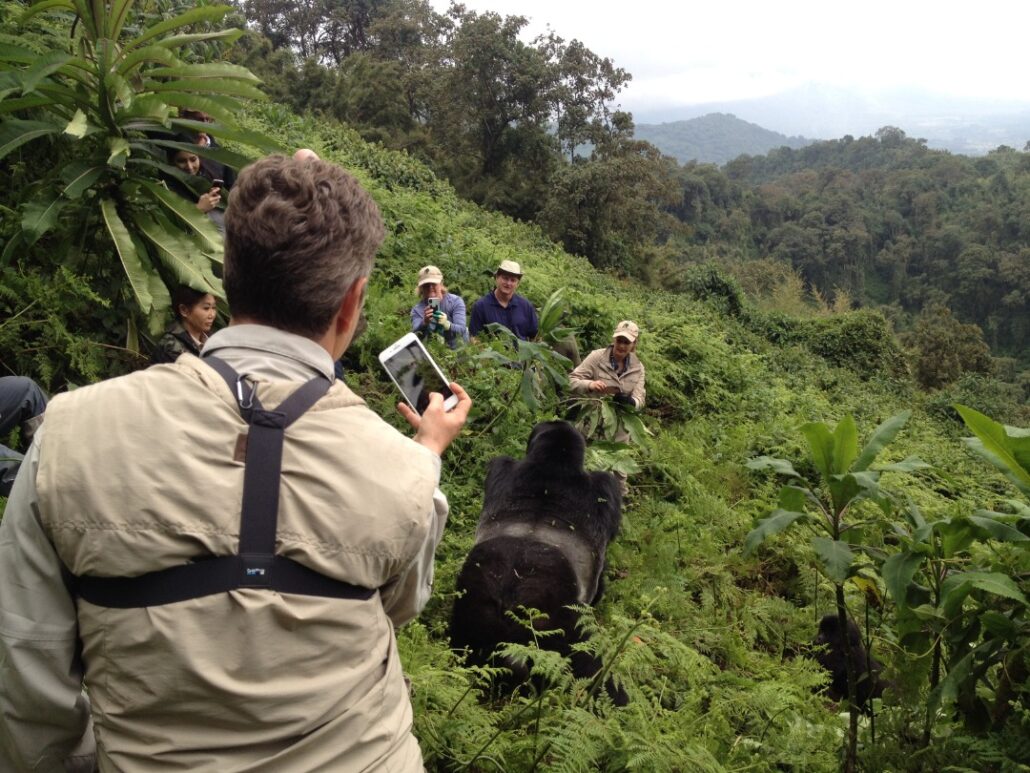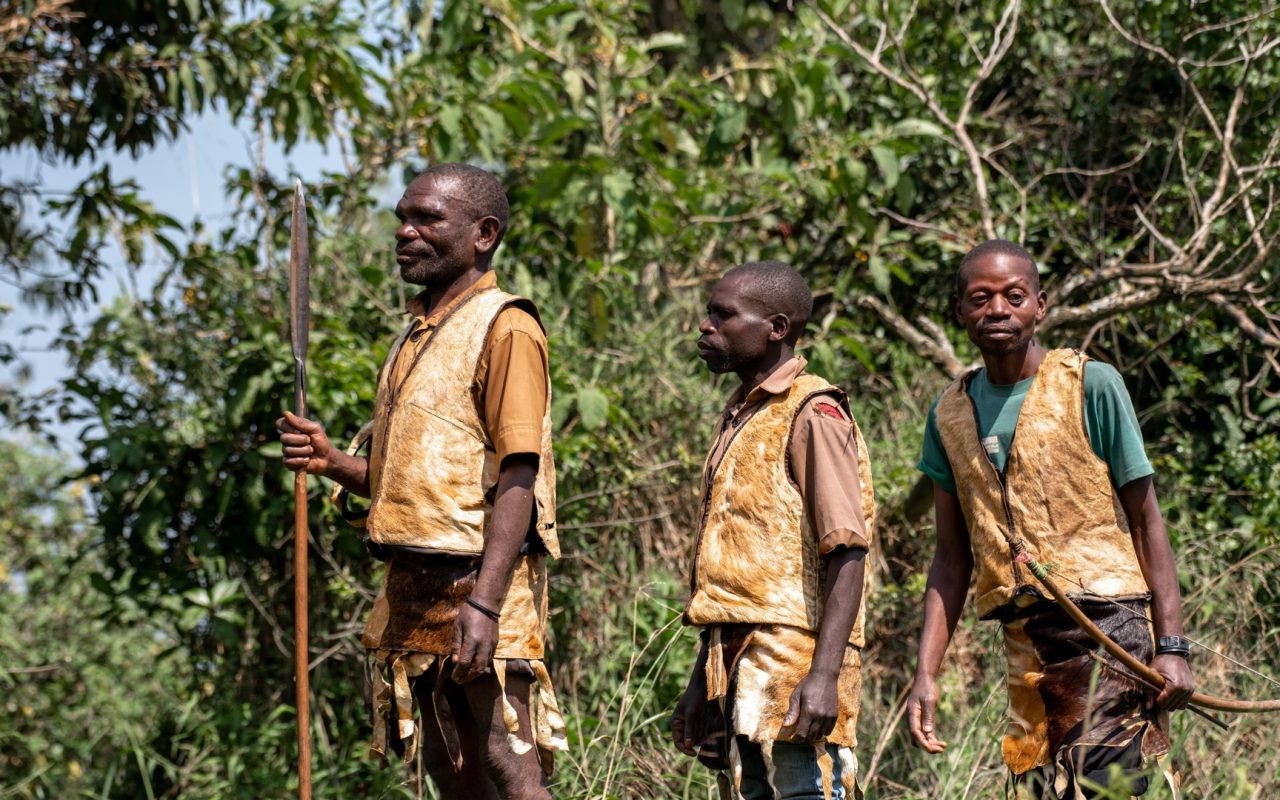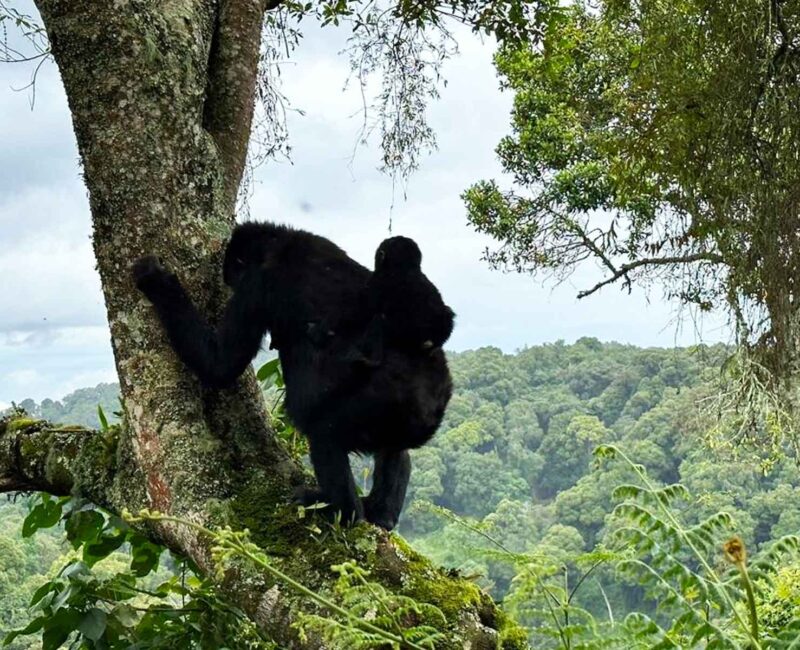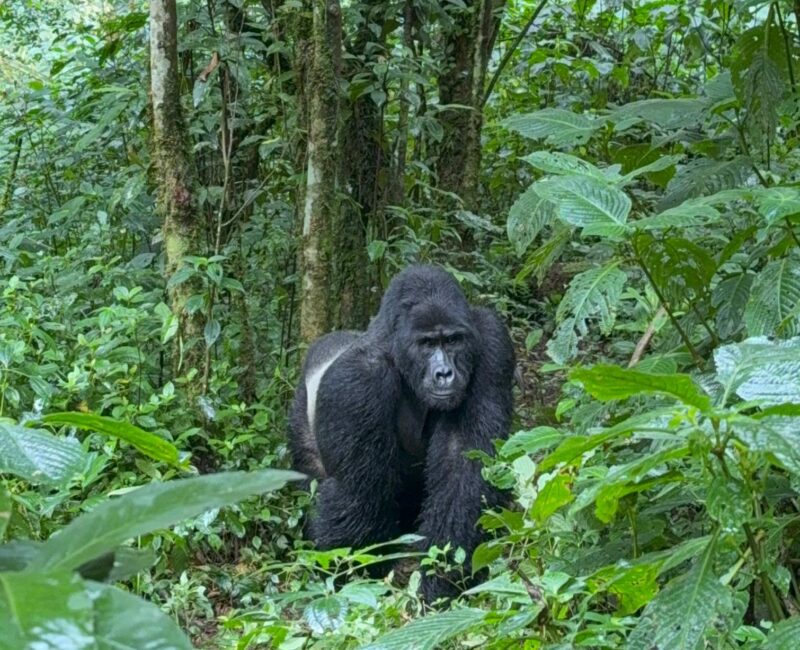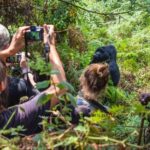
Gorilla Viewing Rules and Mask Protocols
October 7, 2025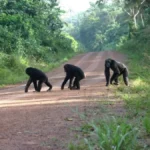
Gorilla Trekking vs. Chimpanzee Trekking
October 9, 2025How Safe Gorilla is Trekking in Uganda
How Safe Gorilla is Trekking in Uganda, the idea of walking deep into a tropical rainforest to encounter a family of mountain gorillas sounds both thrilling and mysterious.
Yet, Uganda Gorilla Trekking is one of the safest and most organized wildlife activities in Africa. Every trek is guided by professional rangers, backed by strict conservation laws, and designed to ensure the safety of both trekkers and gorillas.
Through years of conservation, research and ethical tourism management, Uganda has built a reputation as one of the best destinations for safe and rewarding gorilla encounters.
The habituated gorilla families in Bwindi Impenetrable National Park and Mgahinga Gorilla National Park are accustomed to human presence, allowing visitors to observe them peacefully in their natural habitat.
However, safety depends not only on the regulations in place but also on travelers’ cooperation and respect for these majestic creatures.
Whether you are on a Uganda Gorilla Safari, Uganda Wildlife Safari, or a combined Uganda Safari Holiday, safety measures make the experience secure and enriching. So, how safe is Gorilla Trekking in Uganda, and what makes this adventure stand out among Africa’s top wildlife experiences?
Why Gorilla Trekking in Uganda is Safe
Habituated Gorilla Families
The most reassuring fact about Uganda Gorilla Trekking is that visitors only encounter habituated gorilla families. These groups have undergone years of a slow, careful habituation process led by researchers and conservationists to get them accustomed to human presence. Rangers visit these families daily until the gorillas recognize humans as neutral beings, not threats.
This process creates calm, stable gorilla families that can safely interact with tourists. During Uganda Gorilla Safaris, visitors observe gorillas as they feed, play, groom, and care for their young.
The gorillas remain relaxed, focused on their daily routines, showing little aggression unless provoked. This balance between wild behavior and calmness ensures a safe yet authentic encounter, offering visitors an unforgettable wildlife experience.
Every trek includes expert trackers and rangers who understand each family’s unique traits. They know when a silverback feels protective, when infants need space, and how to position visitors for the best viewing while maintaining safety.
This system ensures a responsible and secure adventure, reinforcing Uganda’s reputation as a premier destination for ethical wildlife tourism.
Trained Guides and Experienced Rangers
The Backbone of Safety
Every Uganda Gorilla Safari is led by skilled guides and park rangers trained extensively in gorilla behavior, first aid, and emergency response. These professionals are not only protectors but also storytellers who share fascinating insights into the forest ecosystem, local culture, and gorilla conservation.
Rangers use their deep knowledge of the forest terrain to ensure smooth trekking routes and safe navigation through the dense vegetation. They communicate via radio with other teams to track gorilla movements and ensure group coordination.
Some treks may also include armed escorts, not to protect from gorillas but to ensure safety from potential encounters with other wild animals such as elephants or buffaloes.
These escorts and trackers make Uganda Gorilla Trekking one of the safest wildlife experiences in Africa. Their expertise ensures that each Uganda Safari Holiday remains enjoyable, educational, and risk-free. With their guidance, even first-time trekkers feel confident exploring Uganda’s lush rainforests.
Strict Safety Protocols for Uganda Gorilla Trekking
Maintaining Safe Distance and Wearing Masks
One of the most important rules during Uganda Gorilla Safaris is maintaining a minimum distance of ten meters from the gorillas. This space prevents physical contact and reduces the risk of transmitting diseases between humans and gorillas.
Guides monitor this distance throughout the trek, ensuring visitors respect boundaries and the animals remain comfortable.
Another essential requirement is the mandatory wearing of masks during gorilla encounters. Gorillas share about 98% of their DNA with humans, making them highly vulnerable to respiratory diseases such as colds, flu, and COVID-19. Wearing masks acts as a simple yet powerful protective barrier, ensuring that no droplets reach the gorillas.
These measures may seem small, but they form the foundation of responsible wildlife viewing. When travelers follow these protocols, they contribute directly to the survival of these endangered primates and the success of Uganda’s conservation model.
Ethical tourism helps sustain both gorilla populations and local communities who benefit from Uganda Wildlife Safaris and Uganda Gorilla Safaris.
Security and Protection in Gorilla Parks
Armed Escorts and Government Stability
Gorilla trekking parks in Uganda particularly Bwindi and Mgahinga are among the most secure conservation areas in Africa. The Uganda Wildlife Authority (UWA) and park rangers maintain tight surveillance, ensuring both visitors and wildlife remain safe. Every trek is accompanied by armed escorts, not to alarm tourists but to enhance confidence and preparedness.
Uganda’s gorilla parks are located in stable regions under constant monitoring. The government prioritizes tourism security, recognizing its importance to the national economy and conservation funding. Visitors are thoroughly briefed on safety procedures before each trek and accompanied throughout their journey.
These safety structures create a reliable environment for Uganda Wildlife Safaris and Uganda Gorilla Safaris. Travelers can focus on the excitement of their adventure, confident that they are in capable hands. This level of organization and care contributes to Uganda’s reputation as a leading destination for responsible eco-tourism and sustainable wildlife travel.
Potential Risks and Practical Precautions
Terrain and Health-Related Safety
While Uganda Gorilla Trekking is safe, the experience involves hiking through rugged forest terrain, sometimes at high altitude. Paths can be slippery, especially after rain, so proper preparation is key. Trekkers should wear sturdy, waterproof hiking boots with strong ankle support and grip. Long trousers, gaiters, and gloves protect against insects and thorny plants.
To ensure comfort, it’s important to pace yourself and carry essentials like water, snacks, insect repellent, and a first-aid kit. Park staff are trained to assist in case of minor injuries or fatigue. Guides also assess each trekker’s fitness level to assign suitable trekking groups based on gorilla family locations.
For health precautions, trekkers who feel unwell or have contagious illnesses are advised not to participate. This rule prevents the spread of disease to gorillas, safeguarding their well-being and ensuring the sustainability of Uganda Gorilla Safaris for future generations.
Why Uganda Remains the Top Choice for Safe Gorilla Trekking
A Model of Conservation and Tourism
Uganda has achieved global recognition for balancing conservation and tourism through strict regulation and community inclusion. The Uganda Wildlife Authority ensures that gorilla permits are limited to small groups of eight visitors per family per day. This system minimizes disturbance, enhances exclusivity, and upholds the highest safety standards.
Moreover, a portion of gorilla trekking permit fees supports community projects and conservation programs. Local communities benefit from tourism revenue through employment, education, and infrastructure, creating a strong sense of ownership and cooperation in protecting gorillas. This collaborative approach ensures long-term safety for both travelers and wildlife.
When combined with Uganda’s stable governance and commitment to visitor safety, these factors make Uganda Gorilla Trekking the most secure and fulfilling wildlife experience in East Africa.
Cultural Experiences Near Gorilla Lodges
Connecting Culture and Conservation
A Uganda Gorilla Safari goes beyond wildlife encounters, it offers deep cultural immersion. Around Bwindi Impenetrable Forest and Mgahinga, travelers can engage in enriching cultural experiences that complement their Uganda Safari Holidays.
- Batwa Cultural Trail: Visitors learn about the Batwa, the forest’s original inhabitants. The experience includes storytelling, traditional music, and demonstrations of ancient survival techniques.
- Village Walks: These walks showcase rural Ugandan life, from banana beer brewing to local crafts. Travelers witness community resilience and contribute directly to local livelihoods.
- Evening Cultural Performances: After trekking, lodges often host traditional dances and music under starlit skies, blending entertainment with cultural appreciation.
Such cultural activities add depth to Uganda Wildlife Safaris, showing how communities and conservation coexist harmoniously. Travelers gain insights into Uganda’s identity while supporting sustainable tourism initiatives.
Key Safety Tips for an Enjoyable Trek
- Follow Your Guide: Always listen carefully to your ranger or guide for instructions.
- Keep Distance: Maintain at least seven meters from gorillas during the trek.
- Wear Masks Properly: Keep your mask on during encounters to protect gorillas.
- Dress for the Terrain: Wear hiking boots, long sleeves, and pants to prevent slips and bites.
- Carry Essentials: Bring water, snacks, sunscreen, and insect repellent.
- Stay Calm: If a gorilla approaches, remain still and avoid direct eye contact.
- Respect Wildlife: Never feed, touch, or disturb the gorillas.
These precautions not only ensure safety but also reflect respect for Uganda’s delicate ecosystems.
Safe Adventures that Inspire Conservation
So, how safe is Gorilla Trekking in Uganda? It is one of the most secure and rewarding wildlife experiences on the continent. With habituated gorilla families, trained rangers, and strict safety protocols, every trek is designed for both protection and pleasure.
Visitors enjoy authentic encounters with endangered mountain gorillas while actively contributing to their conservation.
Choosing Uganda for your Gorilla Trekking adventure means supporting a destination built on responsibility, safety, and sustainability. From the misty trails of Bwindi to the cultural rhythms around your safari lodge, every moment tells a story of coexistence and care.
By following guidelines, respecting nature, and embracing cultural connections, you experience more than just a safari you become part of Uganda’s powerful conservation legacy.
Uganda Gorilla Trekking is not only safe; it is profoundly meaningful, leaving every traveler with memories of harmony between humanity and nature.

